Whenever I do seminars, I always get a great number of questions relating to how to sustain or even gain proficiency in the H2H skill set outside of the short course format. I also get a lot of PMs and emails about the same subject. It can certainly be daunting, trying to assimilate all the things we need to integrate to be a functional multi-disciplinary thinking tactician. And then adding the task of trying to figure out how to actually get fluency in a brand new skill set makes it so much harder, especially when someone is having their first exposure to said skill set. In this article, I will try to give some basic advice that hopefully will help somewhat.
The following is based on over ten years of teaching this material to a wide range of students in open enrollment coursework. It is not based on what I myself like to do, or what fits my personal desires. I need to make sure this is not ego driven, but what can truly be found to work the best for the majority of people. I am also using decades long experiences of some good friends and training partners who teach similar coursework – folks like Craig Douglas of Shivworks, Paul Sharp of Sharp Defense, Chris Fry of MDTS Training, Larry Lindenman of Point Driven Training, and others. Between all of us, we quite literally have almost a century of time teaching, and we have seen thousands and thousands of students. I think I can safely say there is a good body of evidence to show what a good training pathway is.
Ideally, our first training stop would be at a wrestling school that specialized in Greco-Roman wrestling. The reason being is that would be the most useful skill for controlling another person in an entanglement, and giving us our best chance of keeping the fight on our feet. Sadly, the chance that you will find such a place is probably less than you winning the Powerball lottery. While Greco is one of the main forms of wrestling, it has never been popular in the US. Finding someone who actually understands the nuances of that method is a tough job. And, even worse, is that wrestling is seen and practiced as a competitive sport. What that means for our search is that if you do find a wrestling club, they will probably not be open to teaching a non-competitive adult who is only interested in it for self-defense. Most athletes you see training there will be between the ages of 5 and 30, all focused on getting good for a specific competition. I hope that more wrestlers understand their great art as a martial art, and start teaching as such. Unfortunately, that is far down the road.
So where else can we look? We could get to a boxing gym. Having a good set of offensive striking skills and a solid ability to defend yourself from strikes is a good idea. It is also easier to find a good boxing gym then a wrestling club. However, the better the boxing gym, the more likely we have the same problem as the wrestling – a place that is focused on sending people to amateur and professional competitions, and not as self-defense. Be very careful here, because they may very well welcome you with open arms, but not because they are willing to coach you, but rather as “cannon fodder” for their competitive guys. You might find yourself thrown into the ring to spar way too fast just because it gives the full timers an extra body to beat up. It’s not mean. Think of it from their perspective –why should they invest any time into training someone who will never get in the ring? They may as well use you for something useful. I am certainly not condoning that behavior, but merely pointing out the reality. There are some gyms that have a “white collar” program, or teach boxing for exercise, and where you won’t be thrown to the wolves, but these programs tend to be watered down at best, and in the case of “boxercise” have little to do with functional applications. If you do find a good gym, one good aspect of starting at the point of building your striking skills first is that this is probably the least important of the H2H skills needed in self-defense in a weapons based environment (WBE), so you only need to spend about six months to a year working on this part of your game. After that, all you need to really deal with is maintenance of this area.
What about a Muay Thai or Savate school? One of the advantages there is that in this country those places are a little less competition oriented and treat what they are doing as more like a martial art, and therefore welcome a wide variety of people to the training. On the other hand, it can be a bit tougher finding a legitimate school that truly teaches these arts (rather than as part of the curriculum where the teacher learned the material in seminars and was never certified to teach). This is far more amplified for Savate (which is a shame, because it may be the most street martial of the striking oriented combat sports). Again, if you do manage to find a real gym, you only have to put in a short amount of time to get functional, as with boxing in a self-defense context.
I know some of you out there are asking “What about Krav Maga?”. Personally, I am not a big fan of that pathway. Firstly, a KM school, because of their certification/licensing practices, can range from being run by an experienced fighter and coach who has a great fighting oriented gym, to someone whose total knowledge of anything martial comes from a five day “certification” course. That is not an exaggeration by any means. KM has some of the Crossfit model of granting people permission to teach. I personally would not trust my life to someone who has not had a great depth of knowledge and experience in the field. Another issue I have even with the majority of good KM gyms is that they tend to teach along the lines “if this guys does this, then you do that”. I find that a by rote technical execution of self-defense is much inferior to a more robust conceptual approach. And finally, I am not a fan of the fact that the vast majority of KM’s good and functional material comes from other places – i.e. boxing, wrestling, and Brazilian Jiu-jitsu – something which KM proponents freely admit and even brag about. My question is if that is the best part of the curriculum, why get it second hand? Why not get it directly from the source? Believe me, watching many KM instructors teach grappling techniques has a tendency to make me mildly nauseous. And that is not a swipe at them. It is merely truth that someone only learning it in that manner will not get the true understanding of the details and nuances of the technique, just the surface shell. So I generally tend to steer people away from Krav. If you find a top notch KM school, taught by a coach with tons of real experience, then by all means train there.
edited to add the following:
Thanks to a friend (Greg Ellifritz of Active Response Training), I realized I left a couple of arts out and I need to correct it here.
Judo would be a good way to build fighting proficiency as well. Judo has a tendency to cost less than most other systems, and while it is certainly a high level sport, it still is in touch with it’s martial roots and you will commonly find all types and level of people training at a judo club. Throwing someone down really hard onto concrete is a good way to stop an attacker, and there is a great deal of standing clinch work that translates exceptionally well into a self-defense context. And learning to fall safely may well be the single greatest thing you can learn, and it may well be the most useful and most used thing you will do. It is also easier to find than wrestling in many countries such as England, so it makes a decent alternative. The main drawback of Judo (and unfortunately it is a doozy of a drawback) is that the art is really, really traumatic on the body. Regardless of how good your breakfalls are, and how good the mats are, your body takes a hellacious pounding. I love Judo, and practice it as part of my BJJ, but some of my most serious injuries have come from it. So be very careful about that, and think long and hard if you are physically up to the task.
Everything I said, good and bad, about Judo also applies equally to Sambo. A great art, and so similar to Judo. Besides the same issues of body trauma, the other big drawback to Sambo is that it is hard to find a real Sambo school in the US.
What about an MMA (mixed martial arts) gym? Ideally, there is a one shop stop for striking, clinch, and ground work. It is an excellent idea in theory, but tends to break down in reality. Here is why. First, there is no standard to judge the quality of a gym or instructor. You might find a gym where the head coach has 30+ years or experience, was a champion collegiate wrestler and has produced multiple MMA champions. You may also just as easily be at a gym where the instructor had a couple of years of Kenpo karate, gets a blue belt in BJJ (the second lowest rank), and owns a set of wrestling DVDs. Both are just as likely. And it is very hard as a newbie to all this who is legitimate or not. Another problem with MMA is that the gym, like a boxing or wrestling club, may be very focused of competition and is full of young, selfish, twenty-somethings with way too much testosterone. Training in that group is guaranteed to be full of pain and injury. And the third concern is that when doing a method that is a jack of all trades type may mean that you never get enough of any one area to ever have much ability in it. Even most professional MMA fighters separate their workouts into specific striking, wrestling, and ground sessions. If you do that as a non-professional, you may as well go to places to train those things individually yourself and skip the MMA combined training. As before, if you are lucky enough to find a truly exceptional MMA school, (like The Hardcore Gym in Athens, GA owned by Adam and Rory Singer), then jump at it. But understand that is not quite as likely to be available.
When all is said and done, it is my opinion that going to a Brazilian Jiu-jitsu (BJJ) school is the overall best path. Here are my main reasons:
- It is a needed skill set. This part sort of goes without saying. We know the grounded entangled fight happens, and if you find yourself there, you do not want to rely on luck to get you through. What makes this even more critical to actually training it under an instructor and in a gym is that groundwork is the most complex aspect of a fight, and where the tiniest variables can have a huge impact. Only knowing the barest gross movement aspects may leave you with a sizable gap in your ability to survive.
- With the popularity of BJJ, there are legitimate schools almost everywhere now. It is far simpler to find a school close to you than almost any other functional fighting method. Also, BJJ has a meaningful ranking system that with very few exceptions means it is easy to find out if your teacher actually has a depth of knowledge on the subject.
- BJJ, while very popular as a competitive sport, has never lost its roots as a fighting martial art, so every school welcomes all types as students, from the young athletic competition, to the middle-aged white collar professional, to the housewife, to the young child.
- Best bang for the buck – where else in one place can you get a fighting method, as well as learning to deal with massive stress and build the capability to fight through that, to increased strength (you will have to deal with incoming force and pressure from people possibly stronger than you so you will get stronger), actual fight applicable cardio, joint flexibility and mobility, and a nice healthy outlet for outside frustrations.
- Along those lines, we can even improve our standing vertical entangled skills. Not only is there the aspect of throws and takedowns in BJJ itself, but many of the core ground fight techniques have the same motions and actions as our standing clinch actions. So while we might not have a Greco-roman wrestling school to go to, we can still improve in that area.
So, my default suggestion to people is to find a good local BJJ school under a reputable high belt instructor, and commit to going there 2-3 times a week for 2-3 years. By that time, you will have built cardio, strength, combat mindset, and fighting skills that are robust, reliable, and functional for everyone.

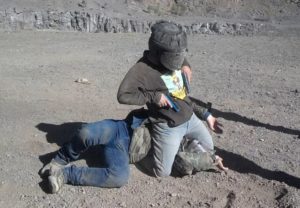
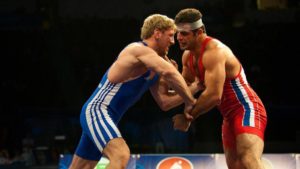
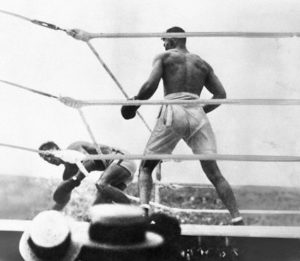
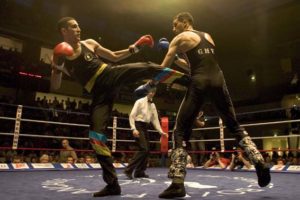
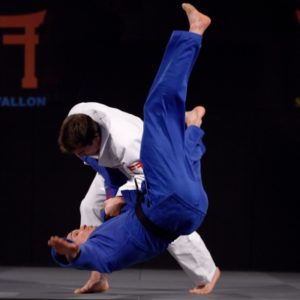
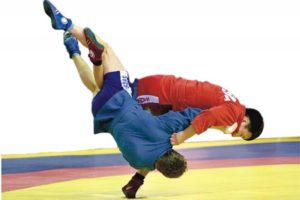
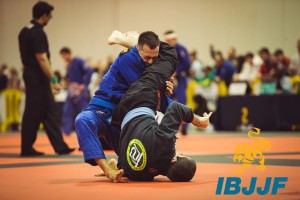
One thought on “A Pathway To Competency”
Comments are closed.